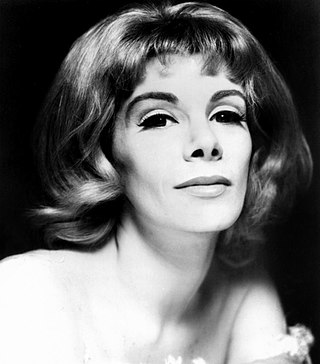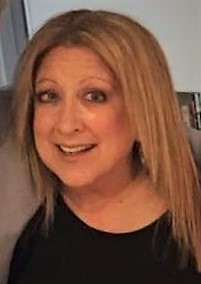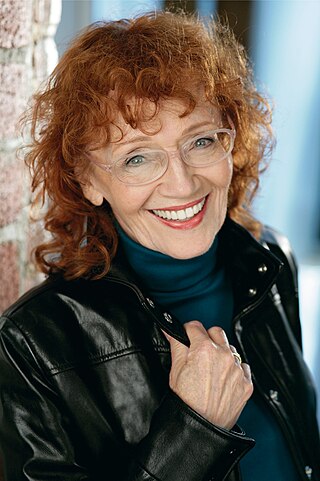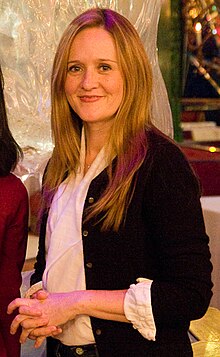
Stand-up comedy is a comedy performance to a live audience in which the performer, known as a comedian, comic or "stand-up", stands on a stage and delivers various humorous and satirical monologues ,and occasionally also physical acts, typically involving no other props except a microphone and a stool. The performance is usually a rhetorical sketch with rehearsed scripts, but many comics employ live crowd interaction as part of their routine.

A comedian or comic is a person who seeks to entertain an audience by making them laugh. This might be through jokes or amusing situations, or acting foolish, or employing prop comedy. A comedian who addresses an audience directly is called a stand-up comedian.

Joan Alexandra Molinsky, known professionally as Joan Rivers, was an American comedian, actress, producer, writer, and television host. She was noted for her blunt, often controversial comedic persona that was heavily self-deprecating and acerbic, especially towards celebrities and politicians, delivered in her signature New York accent. She is considered a pioneer of women in comedy. She received an Emmy Award and a Grammy Award, as well as nomination for a Tony Award.

Phyllis Ada Diller was an American stand-up comedian, actress, author, musician, and visual artist, best known for her eccentric stage persona, self-deprecating humor, wild hair and clothes, and exaggerated, cackling laugh.

Elayne Boosler is an American comedian, writer, and actress.

Judy Lynn Tenuta was an American comedian, actress, and comedy musician. She was known for her whimsical and brash persona of "The Love Goddess", mixing insult comedy, observational humor, self-promotion, and bawdy onstage antics. Throughout her career, Tenuta built a niche but devoted following, particularly among members of the LGBTQ community. Tenuta wrote two comedy books, and received two nominations for the Grammy Award for Best Comedy Album.
Charlie Manna was an Italian American standup comedian, active in the 1960s. He was a New York resident, who stated that he came from the Bronx, and who had studied opera for five years before turning to comedy. He first appeared at the Green Mansions resort, in the Adirondacks near the Catskills resort area. He appeared on many theatrical and television variety shows of the era, including Sunday Night at the London Palladium, The Ed Sullivan Show, The Tonight Show, The Steve Allen Show, Jackie Gleason's Stage Show, the Jack Paar Show, Perry Como's Kraft Music Hall and The Garry Moore Show. He performed at local venues like the Radio City Music Hall, the Bon Soir supper club, the Blue Angel, the Copacabana and Montreal's El Morocco. He appeared in theatrical performances, including Michael Stewart's Shoestring '57 and Hermione Gingold's Sticks and Stones.

Sarah Jane Millican is an English comedian, writer and presenter. Millican won the comedy award for Best Newcomer at the 2008 Edinburgh Festival Fringe. In February 2013 she was listed as one of the 100 most powerful women in the United Kingdom by Radio 4's Woman's Hour, and in the same year she married fellow comedian Gary Delaney. Her first book, How to Be Champion, was published in 2017. Millican has performed on various tours, mainly across the United Kingdom, over the years.
Belle Barth was an American comedian who worked primarily during the 1950s and 1960s. She was known for her foul mouthed, bawdy, irreverent humor.
Joke theft is the act of performing and taking credit for comic material written or performed by another person without their consent and without acknowledging the other person's authorship. This may be a form of plagiarism and can, in some cases, be copyright infringement. A comic who is known to steal jokes may be labelled with the epithet "hack" by other comics. A "hack comic" uses material that is unoriginal or which is blatantly copied from its original author.

Amy Beth Schumer is an American stand-up comedian, actress, writer, producer, and director. Schumer ventured into comedy in the early 2000s before appearing as a contestant on the fifth season of the NBC reality competition series Last Comic Standing in 2007. From 2013 to 2016, she was the creator, co-producer, co-writer, and star of the Comedy Central sketch comedy series Inside Amy Schumer, for which she received a Peabody Award and was nominated for five Primetime Emmy Awards, winning Outstanding Variety Sketch Series in 2015.

Sara Schaefer is an American stand-up comedian, writer, and author.

Jennifer Ann Kirkman is an American stand-up comedian and screenwriter, podcaster, and actress. She is known for her regular appearances as a round-table panelist on Chelsea Lately for 70 episodes from 2008 to 2014.
Dumb Dora is a comic strip published from 1924 to 1936 distributed by King Features Syndicate. The term "dumb Dora" was a 1920s American slang term for a foolish woman; the strip helped popularize the term.
Carrie Snow is an American stand-up comedian, writer, author, and host from Merced, California. She is best known for writing for the television series Roseanne, and acting on the show. Snow was also featured in the documentaries The Aristocrats and Wisecracks.
Aditi Mittal is an Indian stand-up comedian, actress and writer. One of the first women to do stand-up comedy in India, Mittal has been rated amongst India's top 10 stand-up comedians by The Times of India. CNNIBN.com named her as one of the top 30 "witty, intelligent and incredibly fun" Indian women to follow on Twitter. Mittal has written columns and articles in Grazia Men magazine, DNA, Firstpost and Financial Times.
Vag Magazine, which was created in 2010 by Leila Cohan-Miccio and Caitlin Tegart, is an American feminist themed comedy web series starring Kate McKinnon, Jocelyn Guest, Nicole Drespel, Sarah Claspell, Veronica Osorio, and Leslie Meisel. The web series in its entirety can be found on YouTube and Vimeo. Filmed at Upright Citizens Brigade Theatre, Vag Magazine was directed by Zach Neumeyer and produced by Nicole Shabtai.
Feminist comedy refers to comedic acts and styles that further feminist principles, including gender equality and awareness of the social experience of gender. Comedy, the creative works with the intention of humor, has been historically dominated by men. The current comedy culture climate remains male-focused and is currently accepting of women comedians. The conversation surrounding gender-aware comedy has included articles and opinions from many male comedians and fans that are rooted in the idea that women aren’t funny, despite protest from successful female comedians and audiences. However, there is a difference between female humor and feminist humor. As a practice, feminist comedy is not solely comedy performed by women, as many women, especially early female comics, “served to reinforce… cultural stereotypes” and patriarchal views about women and gender. While some scholars have argued that this is because feminism may be antithetical to comedy, which is often described as an aggressive, necessarily masculine act in which the performer centers themselves, others have argued that humor's inclination to subvert hierarchies makes it a particularly effective communication platform for feminist comedians. Feminist comedy frequently references and discusses female-gendered issues and topics such as menstruation, rape, gender inequality, beauty norms, and machismo. Along the lines of intersectionality, which suggests that social identities and systems of oppression are interrelated, many feminist comedians also discuss homophobia, racism, and transphobia.

Adrianne Tolsch was an American comedian. Tolsch's comedy style is bold, conversational, and covers broad topics. She made jokes about life as a middle-age woman, her sex life, her Jewish identity and Jewish family, and life experiences. She was long associated with the Catch a Rising Star comedy club in New York City, as a performer, club manager, and the club's first woman emcee. She was a headliner at many major comedy clubs in the United States and toured domestically and internationally. She also performed on Broadway and in cabaret shows and was a graphic artist. She was married to fellow comedian and writer Bill Scheft. The two toured together in the United States and co-produced the documentary film Take My Nose... Please!
Yang Li is a Chinese stand-up comedian and scriptwriter. Most known for her iconic punchline on the male psyche, "How can he be so average, yet so full of confidence?", Yang rose to fame in a Chinese stand-up comedy competition series Rock & Roast. Tackling controversial gender issues with humour and sarcasm, she received outpouring support as well as overwhelming backlash, stirring up a fierce online debate. The catchphrase "average-yet-confident" went viral on the Chinese social media platform Weibo and became one of the most popular memes among feminist internet users in 2020. Meanwhile, male netizens have accused Yang of "sexism" and "man-hating", provoking gender opposition and promoting hatred against men. Critics have characterised Yang and her followers as unreasonable feminists who demand privilege, while supporters defend Yang to be articulating the female perspective silenced in a patriarchal society.













